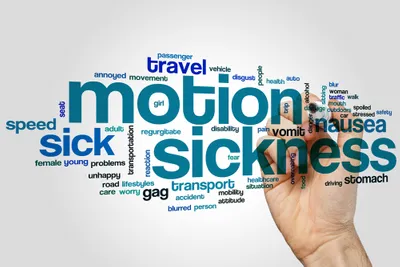Train, bus, car, boat, or roller coaster ride putting your tummy in knots? Well, you’re not alone when it comes to experiencing motion sickness, a type of motion-related sickness that can progress from tummy tumbles, to sweating, lightheadedness, nausea and vomiting quite quickly.
Summer is a prime time for travels—via the open road and the open sea. However, if you can’t “stomach” travel for motion sickness, try these tips to help stop your stomach from doing cartwheels…
1. Who Experiences Motion Sickness?
Motion-related sickness, such as the type you experience riding on a bus, car, boat, or amusement park ride, results when the inner ear canals and eyes send wonky signals to the brain. Those who are prone to motion sickness are prone to mixed signals between what the body feels motion-wise vs. how the eyes visualize motion.
While children are most associated with motion-related sickness, anyone anxious around traveling, nervous about the mode of travel, or those riding in poorly ventilated vehicles can experience motion sickness.
2. Basic Travel Tips
If you experienced motion sickness in your family car as a kid, you likely learned quickly that reading while road-tripping causes nausea. Likewise, sitting backwards while traveling, or sitting in an outside seat (particularly near vehicle exhaust) on can also contribute to queasines.
If you’re prone to motion sickness, seek a seat in the middle of the vehicle or craft where your closest to the road or water’s surface (where it’s most steady). Also, tips from Prenvention.com suggest seeking a seat in view of the horizon and enjoy the view (this will keep your eyes tracking the motion your body is experiencing) to prevent nausea.
3. Wearable Anti-Nausea Aids
If you or a loved one suffer from chronic motion sickness, you’ve no doubt heard of natural, wearable methods, such as anti-nausea wristbands (BioBands and Sea-Band). California-based acupuncturist, Lori Guynes, explains that these wristband aids apply tiny pressure-point balls to the wrist or inside arm to prevent motion sickness.
Trigger points at the wrist and inner arm are thought to steady and soothe nauseated tummies by placing pressure on the direct routes to the stomach and diaphragm.
4. Don’t Overeat
If you suffer from motion sickness after scarfing down a few donuts and a few cups of coffee while reading on the train, your eating habits might be the trigger to your cartwheeling belly.
For instance, according to MedicineNet.com certain heavy, greasy, or acidic foods and beverages can cause motion-induced nausea. So beware your breakfast, lunch, or pre-travel meal isn’t wrought with coffee, alcohol, fried foods and snacks, and odorous foods that can trigger a troubled tummy.
5. Resort to Meds
Research from the American Academy of Otolaryngology (specializing in ear, nose, and throat conditions) recommends popping a nausea-supressing medication at least an hour prior to travel to quelch motion-related sickness symptoms.
The AAO points to Bonine or Dramamine (or other over-the-counter Meclizine medications) which can help soothe the dizziness, vertigo, and motion sickness that’s often triggered when a traveler’s sense of balance and equilibrium are thrown off course. These drugs tame smooth the interaction between the brain and the inner ear, which occurs with motion or seasickness. *Always be sure to check with your doctor before taking any medications.
6. Eat Light and Easily-Digestable Foods
Everyone likes to chow down before a big trip. However, if you’re enjoying a pre-trip meal, do your digestive system a favor and stick to light, even bland, and easily digestible foods.
For instance, the BRAT diet (or bland-food diet made up of Bananas, Rice, Applesauce and Toast), can help soothe an upset stomach and also stop travel-induced sickness in the first place. Stick to “binding” foods such as rice, toast, eggs, or chicken, and limit foods and drinks with high acidity and heavy spices. Also, if you get car sick, bring a few carbonated waters along for the ride.









